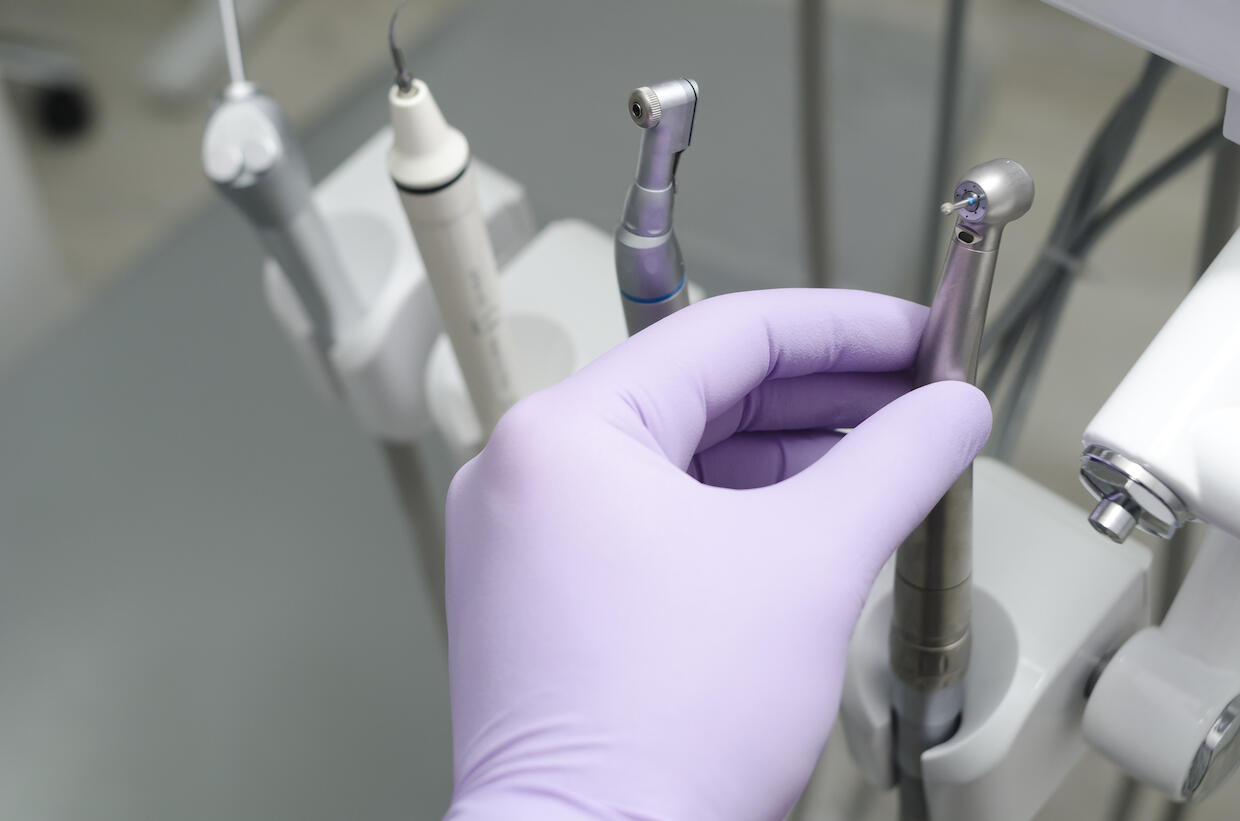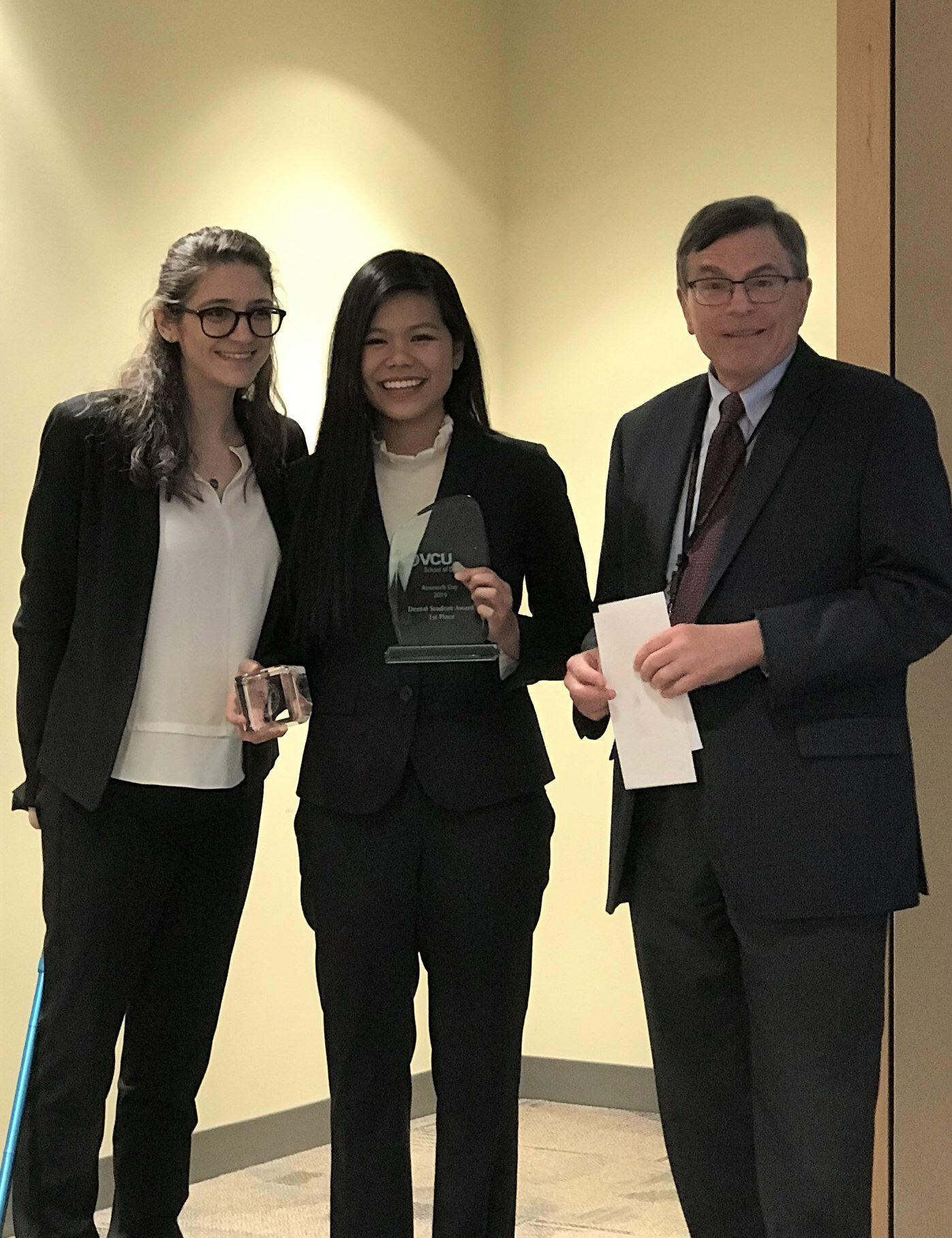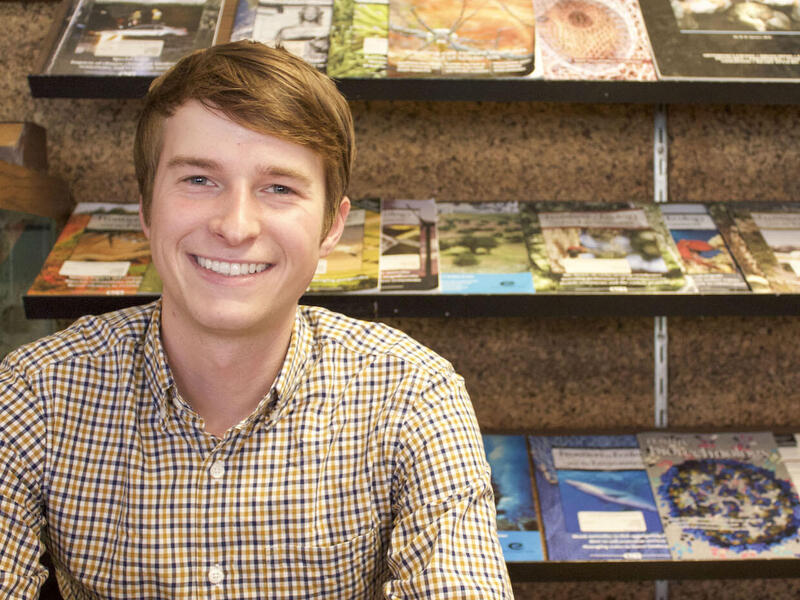
May 7, 2020
VCU students invent a product to reduce injuries from a sharp dental tool
Share this story
When Maria Jividen first got a scratch from one of her dental tools while practicing in a simulation lab at the Virginia Commonwealth University School of Dentistry, she didn’t think much of it. The students were new to the equipment and, from time to time, would get nicked by one of the sharp devices, called a bur, when it sat on the tray next to them.
But after another classmate got a significant scrape from the tool in class, Jividen and her friend and fellow dental student Khanh Dao began to wonder how common this problem was.
“I started thinking, ‘You know what, I bet everyone in dental school has like a scar or a story about being stuck or brushed with their bur,’” Jividen said. “And then, that got me thinking that this is a problem. And I was like, ‘I know it’s not a problem right now because we’re working on mannequins, but this could be really dangerous.’ And then I started looking into all the negative consequences that could happen if you are stuck with a bur or brushed by a bur.”
A bur stick injury, much like an accidental needle stick, is taken seriously due to risk for infection. As Dao and Jividen conducted interviews with classmates and graduates of the dental program, they realized the problem was all too common.
One graduate told them he’d been stuck by a bur in his first few months as a dentist. The bur stick injury required testing for him and his patient, and he needed to take antivirals for several months. Jividen recalled him telling her it was the “most expensive and traumatizing experience of my life.”
So Jividen and Dao set out to find a way to protect their friends and future dentistry colleagues from the risks of being cut by their own sharp dental tool.

Jividen and Dao, who both earned undergraduate degrees at the University of Virginia, started out with the idea to create a retractable bur, but that proved to be a challenge because dental practices would need to replace the entire tool if they wanted the safer version. Instead, they shifted to creating a protective handpiece shield that would fit on the side of an existing dental tray, where the tools sit upright. The covering surrounds the sharp top of the tool from three sides, protecting dental care professionals from potential bur stick injuries while still allowing them to quickly pick up the tool by its handle and put it back.
Their poster presentation about their product won them the top prize, the American Association for Dental Research/Dentsply Sirona Student Research Program Award, at the VCU School of Dentistry’s Research Day in 2019. Their award earned them entry into the student research competition at the International Association for Dental Research annual meeting, which became a virtual conference with the onset of COVID-19. Dao and Jividen submitted a presentation on their product to the virtual competition in April and are awaiting the results.
Bringing teams together across VCU
When they began to develop the idea for their product, they turned to Oonagh Loughran, Ph.D., director of research management and postgraduate research programs at the School of Dentistry. Loughran gave them advice on the early steps of the research, and when they were ready to create a prototype she put them in touch with Bennett Ward, Ph.D., director of project outreach at the VCU College of Engineering, who was thrilled with the idea of having students build a prototype.
“[Ward’s team] had previously tried to find projects with the dental school because dentistry is one of those fields that always loves embracing new technologies,” Dao said. “[In the past] he would send engineering students to go to the clinic and try to find problems, [but] it was really hard to understand what is a problem if you don’t have that clinical aspect. So he was saying that it was really great that we from the dental school are bringing a problem that’s already identified and delineated for the engineering students to take a stab at.”
Ward set up Dao and Jividen with a team of undergraduate engineering students who created prototypes of their designs. Dao and Jividen would take them back to the dental school’s simulation labs to test alongside their classmates and obtain feedback. Ward said the project is an example of how VCU tries to replicate the real-world experience of product development.
“It’s in line with a number of projects that we’ve done over the past several years that we learn by doing,” said Ward, an associate professor of chemical engineering with a background in product development. “When you talk about working in the corporate workplace or as an inventor, you can’t be a one-trick pony. What [companies] do is bring teams together with various skills who have the best chance of success because … [product development] only works if you have the right team.”

When Dao and Jividen felt they were ready to take the next step, they called on Allison Schumacher, director of academic alchemy at the da Vinci Center for Innovation at VCU, for assistance. She coordinated efforts with the center’s Master of Product Innovation students with backgrounds in engineering, chemistry, business and marketing as they improved the prototype further, strategized on the best materials to use in making the product and conducted market research to “move this device closer to commercialization,” Schumacher said.
“Both Khanh and Maria have a lot of passion for the field of dentistry,” Schumacher said. “They carry some of the traits we look for in applicants to the da Vinci Center. They are naturally curious and seek to solve problems they see in the world around them. Neither Khanh nor Maria were content with just accepting that bur sticks were a common problem in their field. They felt compelled to find a preventative solution.”
Jividen and Dao have obtained a provisional patent through VCU’s Innovation Gateway technology marketplace with guidance from Michael Mancini, Ph.D., Innovation Gateway’s business development manager. The students continue to refine their product to pitch to dental companies.
‘We could make an impact on all dental offices’
Loughran in the School of Dentistry said Dao and Jividen’s product could be useful, especially in the onset of COVID-19 when safety has been at the forefront of many providers’ minds.
“In the current times, dentists are pretty much on the front line of respiratory illnesses and viruses,” Loughran said. “So it’s a time when dentists are reviewing their health and safety practices and pretty much every aspect of what they do. And I think this is another piece of equipment to add to the armory to prevent accidents in an infectious environment.”
When presenting their project, Jividen said they have received positive responses from students, faculty and staff in the School of Dentistry and from graduates and practicing dentists through the Virginia Dental Association. Many have said they could use a product like this in their clinics.
“Khanh and I have always talked about making our product the new standard of care for bur stick prevention nationwide,” said Jividen, a third-year student. “I think some people’s minds jump to, ‘Oh, maybe this is just a dental school specific problem,’ but no, all the data shows that this is a problem in dental offices where people have been working as a dentist or dental assistant or dental hygienist for years. Ideally, we could make an impact on all dental offices, not just dental schools.”
Loughran said she has been impressed by the initiative the students have shown in leading this project, “contributing to their profession before they’re even fully fledged dentists.”
As Dao reflected on the project she and Jividen started two years ago, she recognizes their work is far from over but is grateful for all she has learned from the experience so far.
“It was one of the projects I’m really proud about in dental school because it was really a moment of we were going into territory that no one else had been into,” said Dao, who graduates this month and will start a General Practice Residency at the University of North Carolina at Chapel Hill later this year.
“This is something that we are very passionate about, and we wanted to see it through. … Beyond just dentistry, we learned so much from the engineering aspect, managing a team, managing everybody and making sure that all responsibilities are laid out and are clear, and we all understand what we need to do to make this project a realization.”
Subscribe to VCU News
Subscribe to VCU News at newsletter.vcu.edu and receive a selection of stories, videos, photos, news clips and event listings in your inbox.










